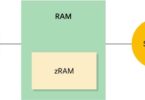Light Field Stereoscope – Natural Virtual Reality Headset
A light field stereoscope which creates a dramatically more natural virtual reality experience than what is prevailing in present days’ leading Virtual Reality Headset, has now been developed, by Assistant Professor, Gordon Wetzstein’s new Stanford Computational Imaging Group. Within a few minutes on trying any of the Virtual Reality Headset, one would sense a headache or an upset stomach, though not all experience the negative side effects of present headsets. However, solving the problem for longer term exposures could be important for various applications like robotic surgery, education, phobia treatment as well as entertainment.
Virtual Reality Headset enables the user in experiencing an immersive world and on using it for a few minutes; the user could experience headache and nausea. The cause behind it all as interpreted by the computational imaging experts is that natural 3D images do not tend to be stimulated by present Virtual Reality Headset and the upsetting feeling can now be cured with the updated virtual reality headset that has been created by the Stanford Computational Imaging Group’s researchers. The headset takes into consideration how the human eye tends to focus and process depth. The prevailing VR headset seems to be flat stereoscopic kind and with these, each eye sees only one image which results in limited depth of the field.
Clash Between Visual Signals
According to Gordon Wetzstein, assistant professor of electrical engineering at Stanford, he states that in the real world, the similar 3D scene is envisaged in a different perspective with various positions of our eye’s pupil. In the present headsets, a clash is between the visual signals where the eye focuses on and how the brain approaches what is seen with both the eyes.
The mismatch is identical to the reason causing motion sickness among individuals. A natural as well as a comfortable 3D viewing experience is developed for individuals with the next generation Virtual Reality Headset model.This has been possible by using light field technology. Researchers, together with the NVIDIA Corpn., have teamed up to present the device at SIGGRAPH 2015 to be held from 9 to 13August in Los Angeles.
The difference between the eyes and the brain can now be determined, with this new virtual reality headset, developed by Wetzstein together with other researchers such as Kevin Chen and Fu-Chung.
Multiple Perspective Created Over Diverse Parts of Pupil
This has been done by developing a kind of a hologram for individual eye that could make the VR experience a natural one. Multiple perspectives that tend to differ are created over diverse parts of the same pupil, with a light field. This is helpful in moving the focus freely as well as experience depth in the virtual reality world, the same as in real life. The updated Virtual Reality headset comprises of two stacked, transparent LCD displays having a spacer known as the `light field technology’ which finds its use in massive areas of application. According to Wetzstein `Virtual Reality Headset tends to give us a new way of communicating among people of telling stories, of experiencing all types of things either remotely or closely and it is going to change communication between people on a fundamental level’. With the reduction in motion sickness, the virtual experience will now be much more fascinating.






